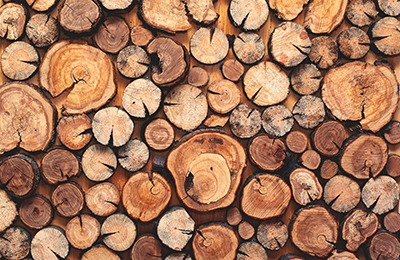We know the United States uses a lot of toilet paper (second only to China) and that other paper products like paper towels, napkins and tissues are everyday essentials. But what about other popular products that “low-key” contain paper or paper by-products?
Let’s start at the beginning and talk about what exactly paper products are and what they’re made from.
What is “pulp”?
Wood pulp is a raw, biodegradable, renewable resource. It’s made by breaking down recycled paper, wood chips, small trees, limbs, and branches—into, well, a pulp.
The wood fibers are broken down either chemically or mechanically to create a wet, messy mass of material with incredible potential. Wood pulp is the primary ingredient in papermaking, paper and wood products, and other innovative uses (more on that later).
What is pulp made into?
Because of its versatility and sustainability, pulp is an incredible resource. It’s the base ingredient for wood and paper products, paperboard and packaging materials, and thousands of other everyday uses like these:
- Tissues, napkins, paper towels, paper cups
- Diapers and menstrual products
- Newspapers, magazines, envelopes, receipts
- Labels and stickers
- Binding agents for food and pharmaceuticals
- Manufactured car filters
Researchers, scientists, and engineers believe in the potential of wood pulp as an innovative and biodegradable replacement for more harmful or finite resources particularly in electronics. Pulp is being used or tested in applications such as microchips, batteries, and electronic circuit boards. The sky is the limit with wood pulp!
What kinds of trees are used to make pulp and paper products?
We love this question because we get to acknowledge how lucky we are to be in Maine, the Pine Tree State, a state that is comprised of nearly 90% forested land! The pine tree itself is a softwood conifer tree.
Different species of trees produce different characteristics and quality levels of its pulp and will determine what products will be best suitable to manufacture.
Let’s dive into the two major types of trees:
Softwood: Softwood trees include conifers like pine, spruce, cedar, redwood, and fir species. Softwood conifers, also called cone-bearing trees, have needles that stick around all year long unlike leaf foliage.
These types of trees have long, low density fibers that give strength and durability particularly in packaging products. Softwoods also have increased absorbency making it an excellent choice for products like paper towels, napkins, diapers, and other such hygiene products.
Fun Fact: 85% of paper made in the United States comes from softwood coniferous trees.
Hardwood: Hardwood trees include species of oak, maple, cherry, birch, sycamore, aspen, and eucalyptus. Hardwood trees may produce a type of fruit or nut and have leaf-shaped foliage that falls in autumn leaving tree branches bare during the winter. Hardwoods have short, dense fibers which gives it a soft characteristic—perfect for products like facial tissues!
Because so many items contain paper products, it’s typical that both hardwood and softwood pulp are combined in varying amounts depending on the intended product and its use.
Fun Fact: 40% of trees in the United States are hardwood trees.
How is the pulping process sustainable?
This is a great question! First, there are certain sustainable regulations in the forestry industry and per location. For instance, it’s very important to plant trees in replacement for every one that is harvested. This may be obvious, but it’s important to note that the pulp and paper industry is entirely committed to sustainable forest management.
Also, every single part of the tree is used. In fact, it’s been said that the only part of a tree that isn’t used is its shade. Smaller trees or unhealthy seedlings that will not grow into mature trees, along with twigs and wood chips are all used for pulp production. The bark and smaller branches go on to produce bioenergy.
What’s the pulping process like?
This is where engineers come in with their expertise! The process of pulping wood and wood chips in its most basic explanation is the use of chemicals and/or mechanical force to separate the wood into cellulose fibers. The fibers are cleaned, bleached, and dried before being manufactured into something else entirely. Any residuals from the process (turpentine, crude oil) is recycled to become a biochemical or renewable diesel product.
All of this to say that there is little to no waste in the process of harvesting trees, producing pulp, and creating new products from any pulp or paper by-product resulting in a managed, sustainable process.
What’s the future of the industry look like?
Particularly here in Maine, there has been drastic adaptation and innovation in paper mills and production sites to keep businesses operational throughout decades of change and mill closures. In other regions, research and development has started and proven successful in creating clothing, biomedicals, electronics, vehicle manufacturing and more.
With technology advances, research and development in sustainability, raw, renewable materials and by-products, and new engineers in the industry with pie-in-the-sky ideas and ambitions, the future is both unknown and continuously bright.
If this topic piqued your interest, you might enjoy a future career as an engineer! Learn more about how we help engineering students here.


Recent Comments